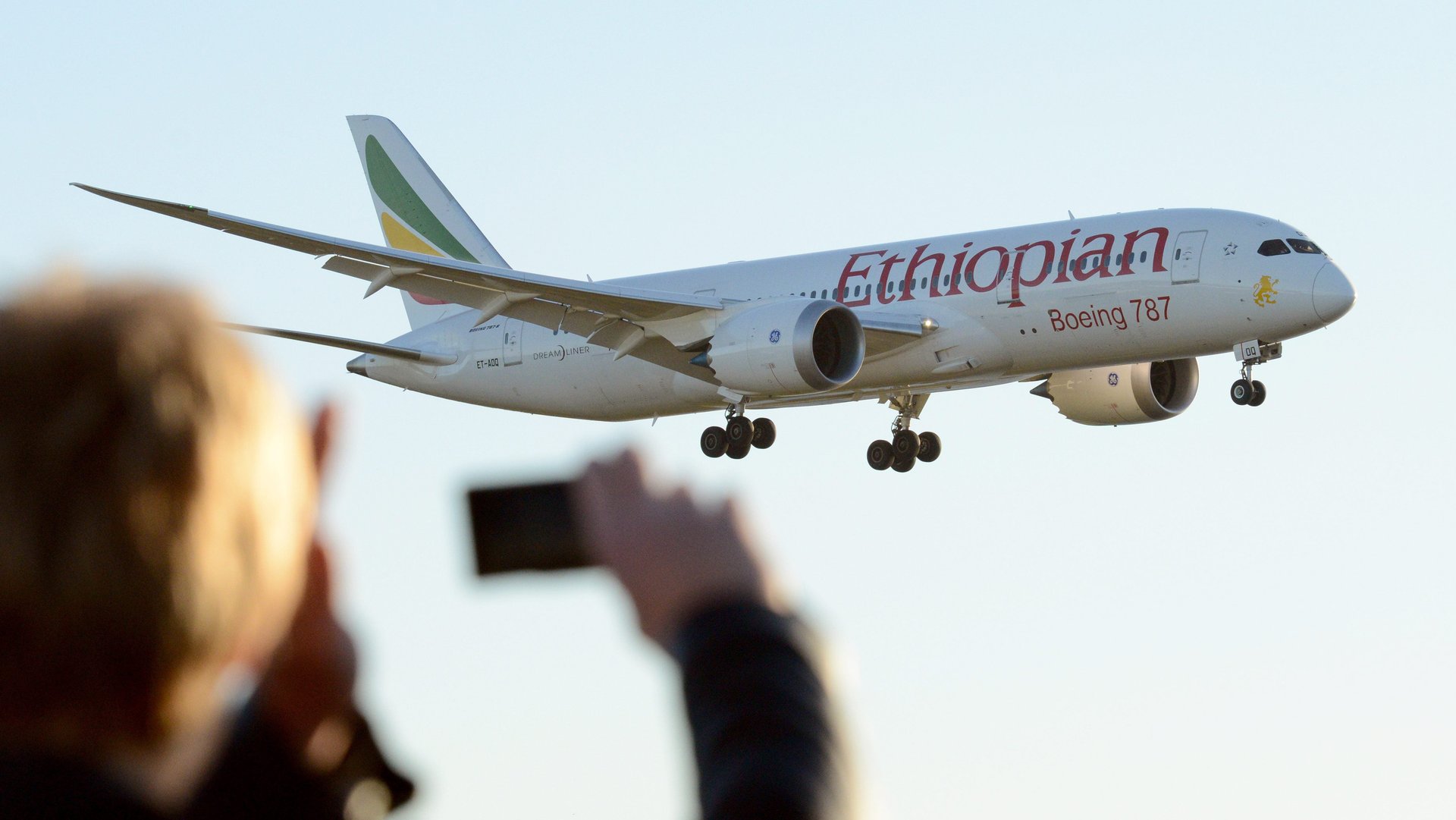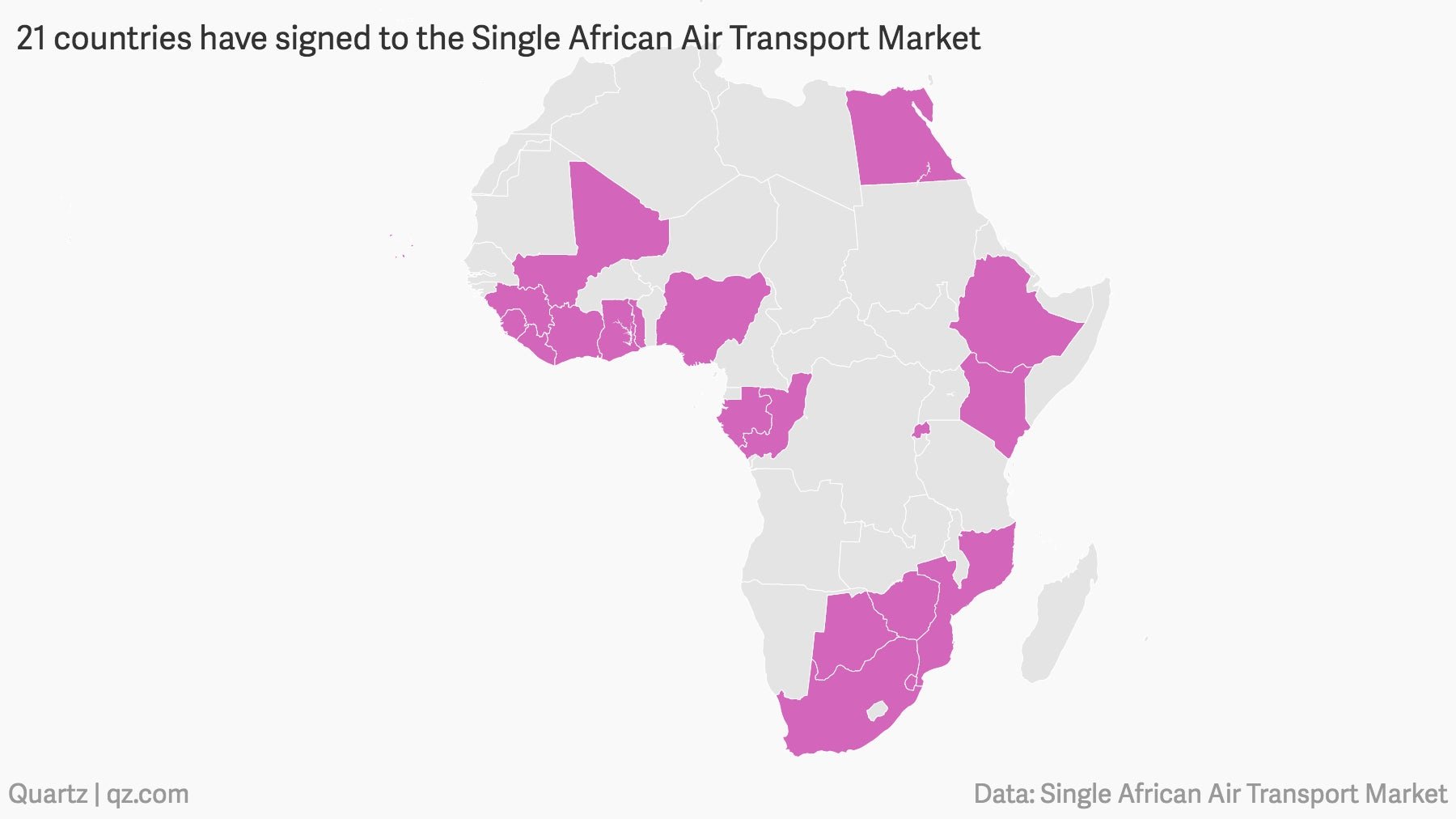How Africa’s largest airline will dominate the continent’s skies
With a mix of strategic investments and partnerships, airline acquisitions, and efficient service delivery, Ethiopian Airlines hopes to take over Africa’s skies and change air travel on the continent.


With a mix of strategic investments and partnerships, airline acquisitions, and efficient service delivery, Ethiopian Airlines hopes to take over Africa’s skies and change air travel on the continent.
This week, the carrier announced it bought a 45% stake to revive Zambia Airways, which went into liquidation way back in 1994. The airline is also in talks with other African governments including Ghana to re-launch their national carriers. Last year, negotiations to manage Nigeria’s biggest private airline Arik Air fell through, but the company has already reportedly expressed interest in two other initiatives in Africa’s largest market. Ethiopian Airlines already operates Malawian Airlines through a deal signed in 2013, and partners with privately-owned ASKY Airlines through a hub in Lomé, Togo.
This determination to spread itself across the continent is driven by its overarching strategy to establish multiple hubs that would ease connectivity and help it cash in on the growing air travel market in Africa. As the largest airline in Africa by revenue and profit, Ethiopian currently runs 97 passenger and freight airlines and flies to more than 120 international and domestic passenger and cargo destinations.
Yet under its Vision 2025, the airline not only wants to become the leading aviation group in Africa but also improve passenger and cargo transport, increase airport services, and expand its aviation academy. By becoming the missing link, analysts say Ethiopian wants could facilitate the flow of investment, trade, and tourism. If it all goes to plan, it could also connect smaller and secondary airports; increase competition, and eventually make Africa’s airspace travel-friendly.
Ethiopian has been expanding even as some of its once larger rivals have been struggling in a difficult global airline sector. Government-owned South African Airways has been flirting with bankruptcy and seeking investors for some time. Kenya Airways has also struggled financially in recent years but hopes its new Nairobi-New York direct flight will help boost its fortunes.
Michael Otieno, a managing partner with Sadim airline solutions in Nairobi, says the airline has been unwavering in its ambition for years now. “This is the ultimate goal of Ethiopian: that every African capital or every African major city will at least have a flight connecting it a day.”
But to achieve this, Ethiopian knows that it will take more than remodeling its hub at Addis Ababa’s Bole international airport, expanding the runways, or providing free Wi-Fi. To properly challenge the glitzy air hubs in the Middle East and Europe, Otieno says that it will have to enlist the support of other African airlines.
By doing this, Otieno says the airline will not only help improve connectivity but also help transfer its 70-year expertise of airline management and profitability.
“They don’t want to be seen as a monopoly,” Otieno said. “Because you know very well that any business that grows to be a monopoly is again sometimes not very well received by everybody.”
Phil Hogg, the founder of the UK-based airline consultancy FPR Associates, says these efforts to connect more African cities might not be very smooth and “may well face a political challenge” in some capitals. Yet Ethiopian could see itself benefit from African Union-sanctioned plans to open up the airspace in Africa and liberalize frequencies and tariffs. As such, airlines like Kenya Airways or South African Express might not see themselves as competitors to Ethiopian Airlines but part of an integrated system to improve aviation in Africa.
“The expansion is here, it is given,” Otieno says, and its success will depend on Ethiopian leveraging its position as a leading airliner and calling others “to throw their back into the whole effort to get the continent connected.”
